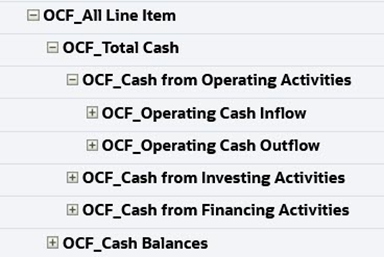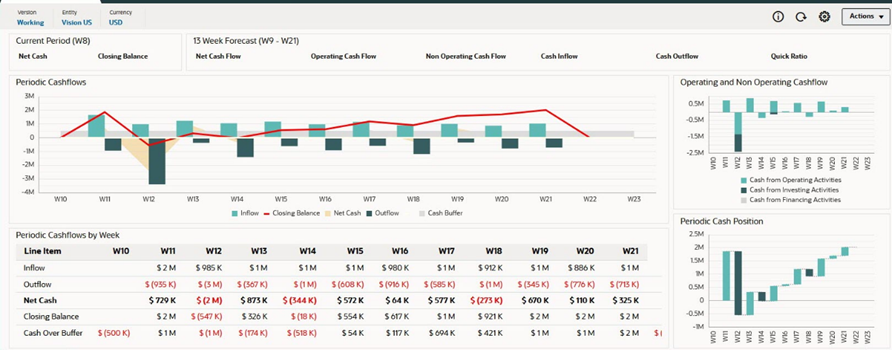Update on Oracle EPM APIs and Accessibility for Cloud
1. RELIABILITY AND PERFORMANCE IMPROVEMENT OF EPM AUTOMATE USING BASIC AUTHENTICATION
- Oracle has implemented significant optimizations in basic Authentication for EPM Automate to improve its reliability and performance.
2. NEW "SECURITY REST APIS" CHAPTER IN THE REST API GUIDE
- A new "Security REST APIs" chapter describes the REST APIs to manage security features in Oracle Enterprise Performance Management Cloud.
- In addition to the REST APIs related to security that were originally in the Migration REST APIs chapter, this chapter also includes the two new REST APIs related to restricted data access added in this update.
3. DEFINED LANDMARK REGIONS IN PAGE AREAS
- EPM Cloud now supports defined landmark regions that aid in jump-to navigation for assistive technology users and reduces the dependency on hidden anchors and keyboard shortcuts.
- This includes:
- EPM Global Header banner
- Global Menu navigation
- Settings and Actions complementary information
- Content Main
- Announcements region
- Clusters and Cards navigation
- Cards navigation
- Sub-tab navigation
- Two new REST APIs allow you to get and set restricted data access.
- Get Restricted Data Access: Returns true if the environment is configured so that “Submit Application Snapshot” cannot be selected by a Service Administrator while submitting Provide Feedback; otherwise, returns false.
- Set Restricted Data Access: Enables/disables the selection of “Submit Application Snapshot” by the Service Administrator while submitting Provide Feedback.
- The setRestrictedDataAccess and getRestrictedDataAccess commands are available with this update. The setRestrictedDataAccess command configures EPM Cloud environments to prevent Service Administrators from consenting to submit an application snapshot to Oracle while using the Provide Feedback utility.
- The getRestrictedDataAccess command displays whether an EPM Cloud environment is configured to prevent Service Administrators from consenting to submit an application snapshot to Oracle.





